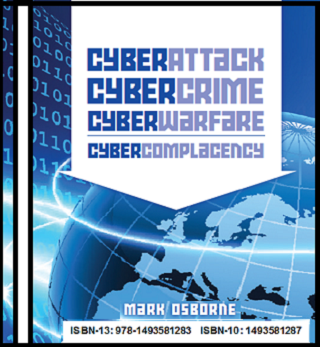
CyberAttack
CyberCrime
CyberWarfare -
CyberComplacency

|
CyberAttack CyberCrime CyberWarfare - CyberComplacency | |
| " |
|
NEW BOOK
Cyber Attack,Cyber Crime, Cyber Warfare
- Cyber Complacency
Is Hollywood's blueprint for Chaos coming true?
ISBN-13: 978-1493581283
ISBN-10: 1493581287




|
ITS FOR CHARITYWill hackers or hacktivists shut down the banks, the gas and the electricity supply? Can terrorist invade CyberSpace? Using malware and BotNets will they put an "out to lunch" sign on UK PLC? What are the techniques used to detect this type of attack and do those in power have a clue about the exposure.
Mark Osborne, also known as loud-fat-bloke, will answer all these questions and more. After a lifetime of running the cyber security functions at the largest Security Consulting, ISPs and Technology providers, he designed Europes largest cyber-monitoring system and has managed his way out of more than his fair share of Cyberattacks.
|
|
The Book covers:
|
||
| HPING |
hping is a command-line oriented TCP/IP packet assembler/analyzer. The interface is inspired by the ping unix command, but hping isn't restricted to ICMP echo requests. It supports TCP, UDP, ICMP and RAW-IP protocols, has a traceroute mode, and many other features. In the book we use it to demonstrate SYN attacks - It is commonly available on many system but we provide a version here in case it is not on yours.
|
|
| bgpcrack |
BGPCRACK BGPCRACK is a linux application written in C. It reads in a session recorded by tcpdump or ethereal. It then attempts to crack the MD5SIG. The bgp configs for Lab1 can be used to test it and record a session.
|
|
| dns_spquery |
Name: dns_spquery.c Description:
dns_spquery.c is written in C and sends a DNS recursive name query to
a name server of your choice with a spoofed source IP address selected at
runtime.
For educational purposes, as a reference in lectures I am giving and
this book,
I needed a tool to demonstrate a DNS reflection/amplification attack. There
are
a few good tools out there, but most require special libraries or
perl/python modules
that restrict their portability.
dns_spquery.c is written entirely in C and requires no special libs or
header files.
It has been designed to run on most LINUXs
|
|
| bgpspoof |
bgpspoof Source of the bgpspoof suite of programs
The first of these is bgpspoof which takes parameters to generate a BGP packet and outputs a record in a file with the format of a BGP PDU
The second program is
tcphijack. This is a non blind spoof TCP spoof program that can send the payload generated above
|
|
| BGPLAB1 |
BGPLAB1 - This contains BGP/zebra configs for the first part of the BGP section of chapter 11
|
|
| BGPLAB2 |
BGPLAB2 - This contain BGP/zebra configs for the second part of the BGP section of chapter 11
|
|
| Fastflux.sh |
fastflux.sh
|
|
| Example bind files |
Example bind files
|
|
| bind safe conf |
safe conf
|
|
| Badword20.exe |
This contains the wordpad modified executable show in chapter 11
|
|
|
|